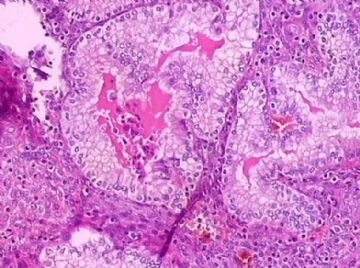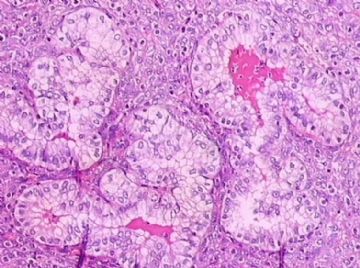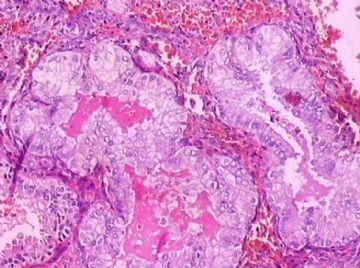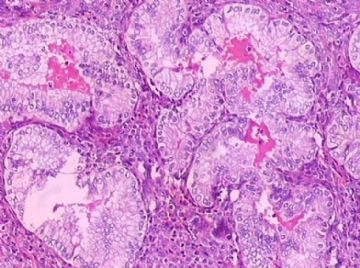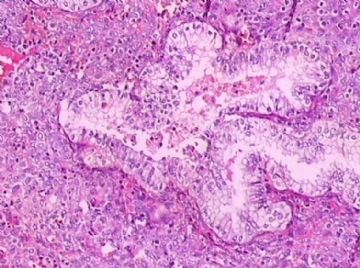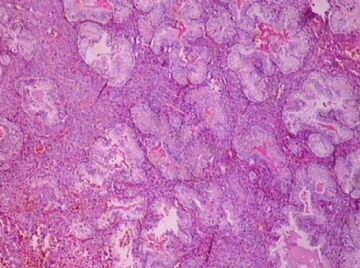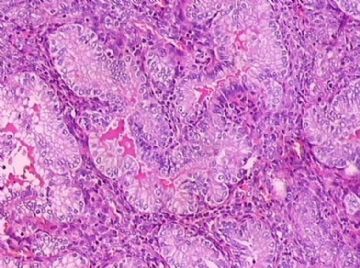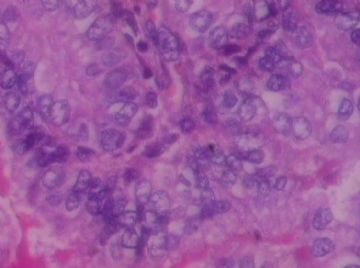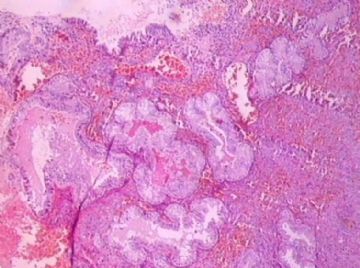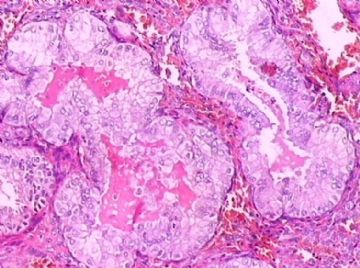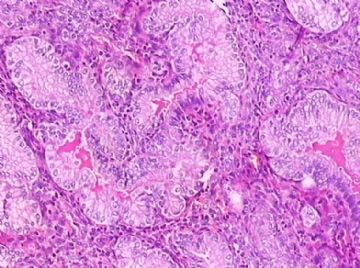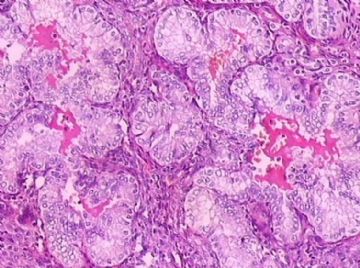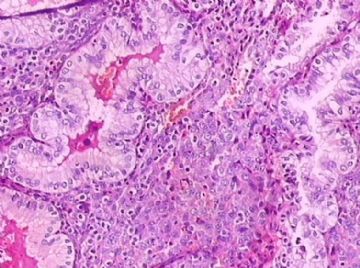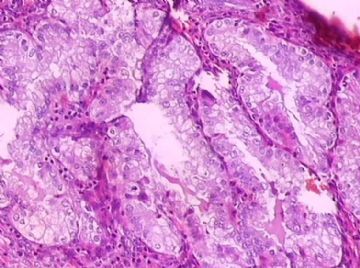| 图片: | |
|---|---|
| 名称: | |
| 描述: | |
- B1745子宫内膜39岁,请教各位老师是复杂增生还是分泌
| 姓 名: | ××× | 性别: | 年龄: | ||
| 标本名称: | |||||
| 简要病史: | 不规则流血1个月 | ||||
| 肉眼检查: | |||||
-
本帖最后由 于 2009-06-14 11:59:00 编辑

- 努力的工作,快乐的生活!
相关帖子
-
laofan200108 离线
- 帖子:132
- 粉蓝豆:27
- 经验:162
- 注册时间:2008-04-27
- 加关注 | 发消息
-
vitamin-xbl 离线
- 帖子:383
- 粉蓝豆:0
- 经验:431
- 注册时间:2007-04-03
- 加关注 | 发消息
杨斌老师意见:
根据该病例中的蜕膜化间质加分泌期形象子宫内膜腺体,因此我诊断为分泌期子宫内膜,没有复杂性增生。因为有几个网友在该病例的讨论中提到了药物影响,那么我就和大家讨论一下药物影响下的子宫内膜。所谓的药物影响也就是指黄体酮相关的改变。子宫内膜对内源性和外源性黄体酮的不同反应在形态学上是显著不同的。子宫内膜对于内源性高水平黄体酮的反应表现为内膜间质和腺体都有改变,如本例所示。人体很“奇妙”的,她可以“辨别”出她所接受的黄体酮是不是自身所产生的。对于外源性的黄体酮,比如口服避孕药,内膜间质表现为比内源性黄体酮更明显的蜕膜化。而与此对应,内膜腺体就相对不太活跃了,甚至可以有“萎缩”的表现,缺乏分泌现象。所以子宫内膜间质和腺体反应的不同步就是一个使用外源性激素的提示。腺体萎缩的比例是与所用药物剂量有关的。临床一般用高剂量来治疗子宫内膜增生、止血或其他情况。在治疗复杂性或者复杂性并伴有不典型增生的患者时候,增生的腺体通常萎缩,但是鳞状化生的腺体对其反应差,因此在治疗后的诊刮中还是可以见到的。
因此当以后的工作中做出“与用药有关”的子宫内膜时,自己千万注意,要同时检查内膜间质和腺体……

- 赚点散碎银子养家,乐呵呵的穿衣吃饭
Based on decidualized stroma and secretory endometrial glands, it is the SECRETORY ENDOMETRIUM, not complex hyperplasia.
Now I would like comment on so-called "drug effect" on endometrium, since several of you mentioned above on drug effect in this case. The drug effect usually means progestin-related changes. The morphologic changes in endometrium will be dramatically different between endogenous and exogenous progestin. In response to high level of endogenous progestin produced by a woman herself, both endometrial stroma and glands will show changes as seen in this case. However, human body is smart enough to recognize some progestin is not produced by themselve. In response to exogenous progestin, such as oral contraceptive pills with high dose of progestin, endometrial stroma shows significant decidualized changes which is much more dramatic than endogenous progestin. However, endometrial glands are often inactive or even atrophic, lacking secretory change. This asynchronized morphologic changes between endometrial stroma and glands is the hallmark for indication of exogenous "drug usage". The degree of glandular atrophy is proportionally correlated to the dosage of progestin. High dose progestin is used clinically for treatment of endometrial hyperplasia, stop bleeding and other situations. In case of treatment of complex or atypical complex hyperplasia, the hyperplastic glands often become atrophic. But squamous metaplasia will be less respond to progestin and is often persistent in the follow-up endometrial biopsy.
Therefore, when you toss a differential diagnosis of "drug effect" in the future, please make sure you examine both stroma and glandular changes.

- 不坠青云之志,长怀赤子之心

